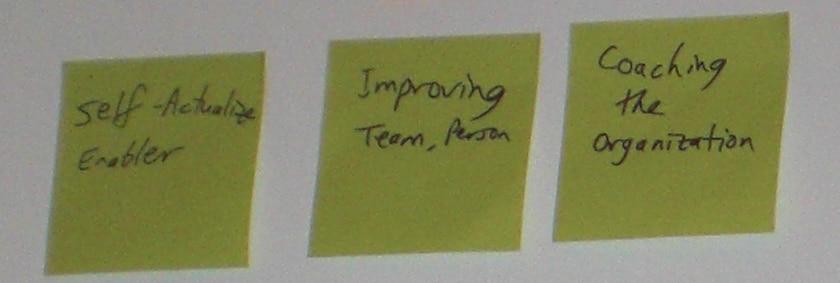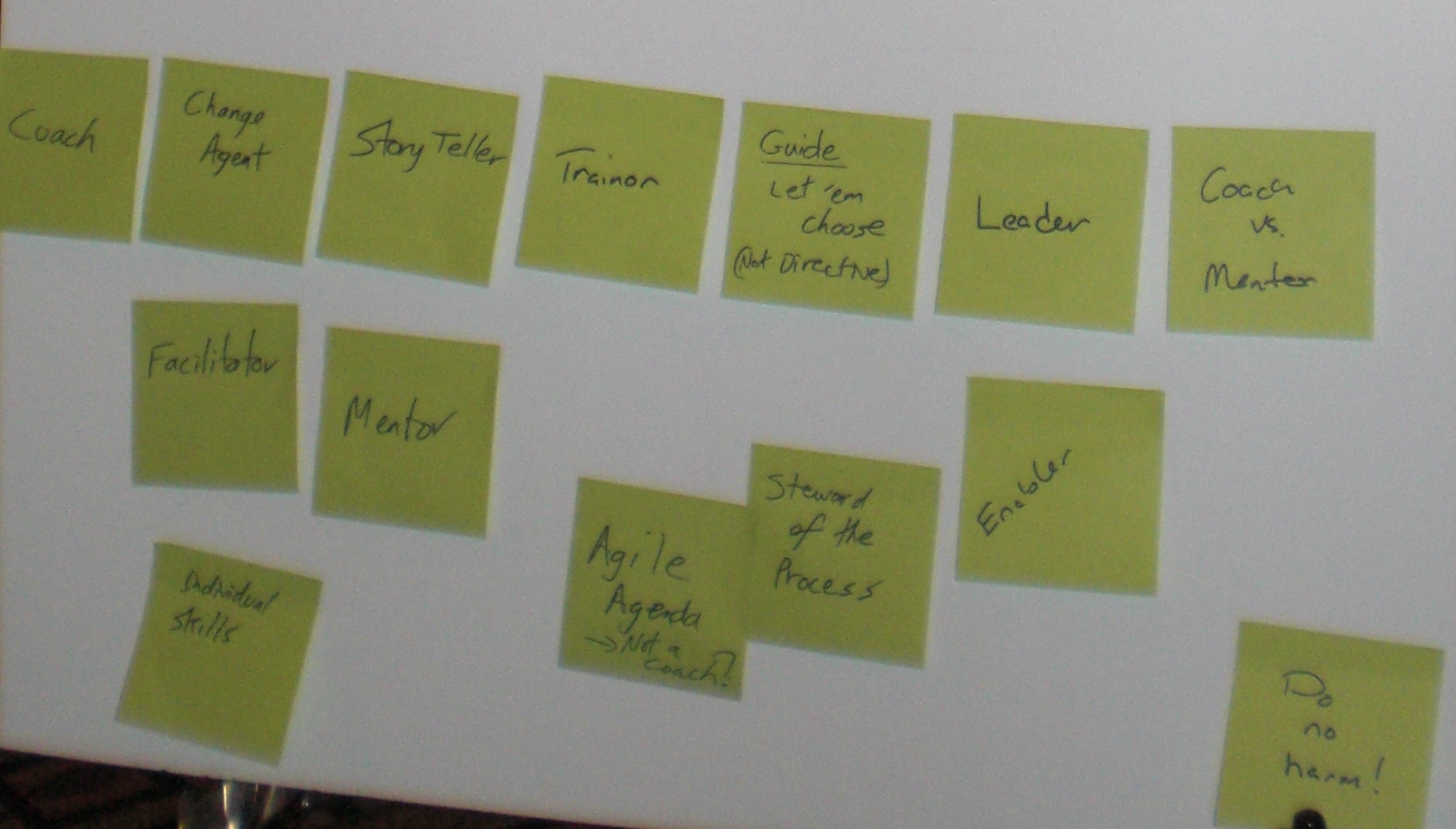After a couple of Agile 2009 sessions on coaching I realized I was even more confused than ever about how to think about my work as an Agile Coach. Arto Eskelinen and I decided to run an OpenJam to clarify this. Thanks to: Lyssa Adkins, Tobias Mayer, Dave Nicolette, Rachel Davies, Tim McCoy and David Fox. (Sorry if I missed anyone.)
After brainstorming ideas, we were able to cluster them into three layers to reflect different logical levels. Let’s go through them in turn.
Goal of Coaching

The first level is about what we hope accomplish by working with a client. The primary purpose is to help the client to self-actualize – to move them forward on their journey towards reaching their potential.
Note that an engagement will involve three types of clients:
- Individuals
- Teams
- Organization
(In this blog, I’ll talk generically about clients – it could be any of the three types.)
That’s a lot to do, so it’s important to choose…
Coaching Approach
Learning Models
To be effective, it helps to understand where the client is in regard to a particular skill. One model is Shu (Beginner) – Ha (Practicing) – Ri (Expert) that Allistair Cockburn talked about at the keynote. Another variant of this is the Dreyfus Model of Skill Acquisition: Novice, Advanced Beginner, Competent, Proficient, and Expert. The type of intervention we choose as a coach depends on the skill level of the client: a beginner may simply be taught, while a guiding and clarifying is needed when skill is higher.
Consultative Approach
We talked about understanding your client’s needs at any point in time. The traditional approach from consulting is to assess the situation and make a recommendation. The assessment could be a formal one or based on ongoing tacit knowledge. Related to this is the goal of a healthy client (team). As an Agile coach, one model is to diagnose problems and provide prescriptions/guidance. This seems like common sense but kept coming up as a critical success factor.
Roles played by coaches

The above image indicates some of the roles that were identified (probably a bunch missing). Here’s what came up:
- Change Agent
- Trainer
- Story Teller
- Guide
- Leader
- Mentor
- Facilitator
- Enabler
Agile Agenda?
One interesting comment was that an Agile coach has a specific agenda – adoption of Agile – that was in conflict with pure coaching. Now that I have benefit of a few days to reflect, I this does not seem to be a conflict. As an Agile Coach, if I don’t think a client will benefit from Agile, I won’t take them there.
Steward of the Process
Another role that I would like to call out separately is Steward of the Process. I think it is probably true in many cases, but I find this a little alarming since as a coach I would like to leave one day and have my client succeed without me. Perhaps as a transition plan, we need to find a new steward and then coach them to be successful in that role.
Do no harm
One final point to mention is do no harm! We are there to make clients (individuals, teams, organization) successful, not to inflict Agile process and practices indiscriminately. Even if we know something is really good, it might not be the right thing for this client at this point in time.



